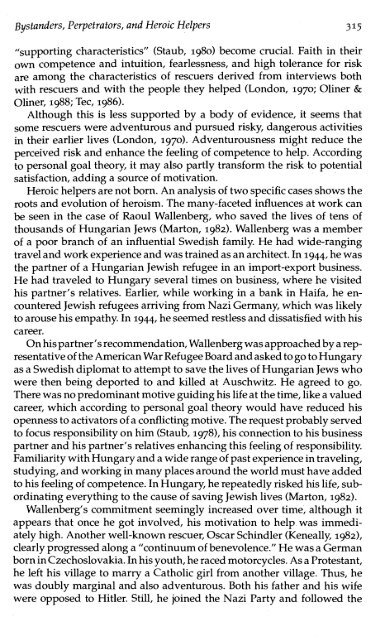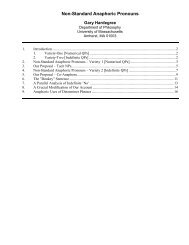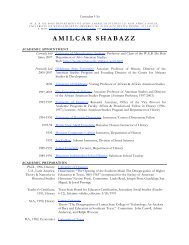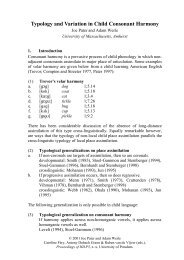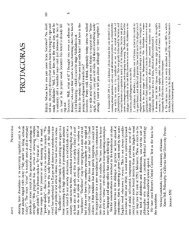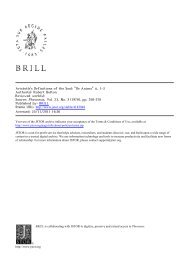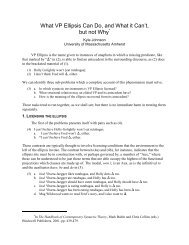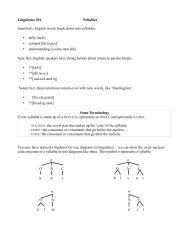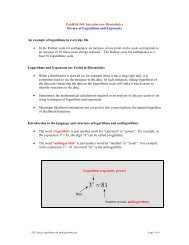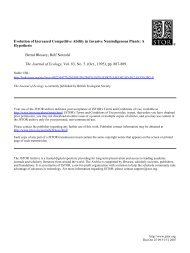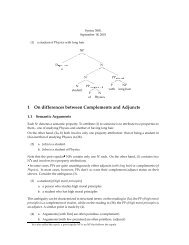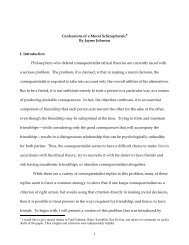The Psychology of Bystanders, Perpetrators, and Heroic Helpers
The Psychology of Bystanders, Perpetrators, and Heroic Helpers
The Psychology of Bystanders, Perpetrators, and Heroic Helpers
You also want an ePaper? Increase the reach of your titles
YUMPU automatically turns print PDFs into web optimized ePapers that Google loves.
~yst<strong>and</strong>ers, <strong>Perpetrators</strong>, <strong>and</strong> <strong>Heroic</strong> <strong>Helpers</strong> 315<br />
/Isupporting characteristics" (Staub, 1980) become crucial. Faith in their<br />
own competence <strong>and</strong> intuition, fearlessness, <strong>and</strong> high tolerance for risk<br />
are among the characteristics <strong>of</strong> rescuers derived from interviews both<br />
with rescuers <strong>and</strong> with the people they helped (London, 1970; Oliner &<br />
Oliner, 1988; Tec, 1986).<br />
Although this is less supported by a body <strong>of</strong> evidence, it seems that<br />
some rescuers were adventurous <strong>and</strong> pursued risky, dangerous activities<br />
in their earlier lives (London, 1970). Adventurousness might reduce the<br />
perceived risk <strong>and</strong> enhance the feeling <strong>of</strong> competence to help. According<br />
to personal goal theory, it may also partly transform the risk to potential<br />
satisfaction, adding a source <strong>of</strong> motivation.<br />
<strong>Heroic</strong> helpers are not born. An analysis <strong>of</strong> two specific cases shows the<br />
roots <strong>and</strong> evolution <strong>of</strong> heroism. <strong>The</strong> many-faceted influences at work can<br />
be seen in the case <strong>of</strong> Raoul Wallenberg, who saved the lives <strong>of</strong> tens <strong>of</strong><br />
thous<strong>and</strong>s <strong>of</strong> Hungarian Jews (Marton, 1982). Wallenberg was a member<br />
<strong>of</strong> a poor branch <strong>of</strong> an influential Swedish family. He had wide-ranging<br />
travel <strong>and</strong> work experience <strong>and</strong> was trained as an architect. In 1944, he was<br />
the partner <strong>of</strong> a Hungarian Jewish refugee in an import-export business.<br />
He had traveled to Hungary several times on business, where he visited<br />
his partner's relatives. Earlier, while working in a bank in Haifa, he encountered<br />
Jewish refugees arriving from Nazi Germany, which was likely<br />
to arouse his empathy. In 1944, he seemed restless <strong>and</strong> dissatisfied with his<br />
career.<br />
On his partner's recommendation, Wallenberg was approached by a representative<br />
<strong>of</strong> the American War Refugee Board <strong>and</strong> asked to go to Hungary<br />
as a Swedish diplomat to attempt to save the lives <strong>of</strong> Hungarian Jews who<br />
were then being deported to <strong>and</strong> killed at Auschwitz. He agreed to go.<br />
<strong>The</strong>re was no predominant motive guiding his life at the time, like a valued<br />
career, which according to personal goal theory would have reduced his<br />
openness to activators <strong>of</strong> a conflicting motive. <strong>The</strong> request probably served<br />
to focus responsibility on him (Staub, 1978), his connection to his business<br />
partner <strong>and</strong> his partner's relatives enhancing this feeling <strong>of</strong> responsibility.<br />
Familiarity with Hungary <strong>and</strong> a wide range <strong>of</strong> past experience in traveling,<br />
studying, <strong>and</strong> working in many places around the world must have added<br />
to his feeling <strong>of</strong> competence. In Hungary, he repeatedly risked his life, subordinating<br />
everything to the cause <strong>of</strong> saving Jewish lives (Marton, 1982).<br />
Wallenberg's commitment seemingly increased over time, although it<br />
appears that once he got involved, his motivation to help was immediately<br />
high. Another well-known rescuer, Oscar Schindler (Keneally, 1982),<br />
clearly progressed along a "continuum <strong>of</strong> benevolence." He was a German<br />
born in Czechoslovakia. In his youth, he raced motorcycles. As a Protestant,<br />
he left his village to marry a Catholic girl from another village. Thus, he<br />
was doubly marginal <strong>and</strong> also adventurous. Both his father <strong>and</strong> his wife<br />
were opposed to Hitler. Still, he joined the Nazi Party <strong>and</strong> followed the


